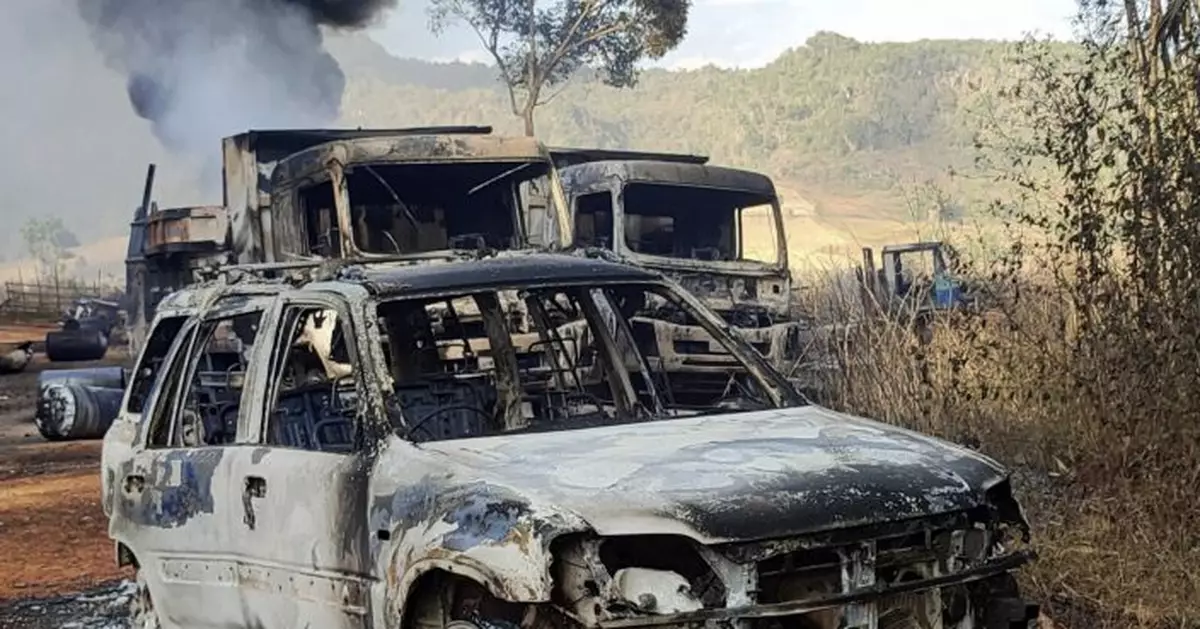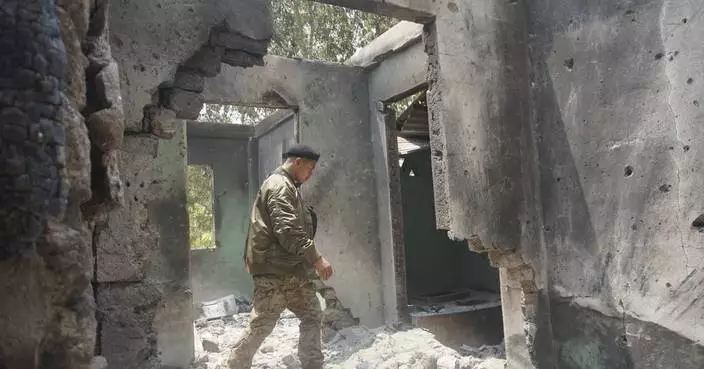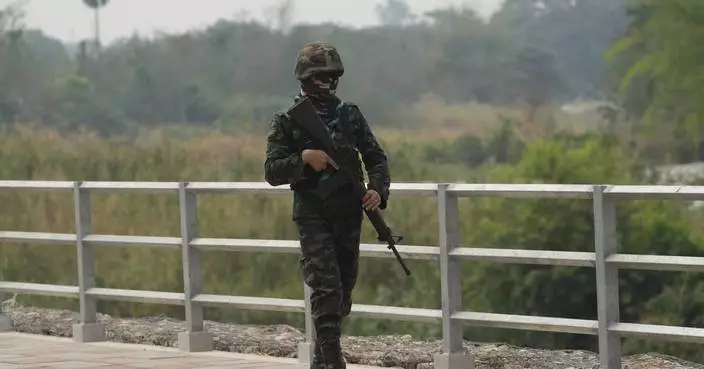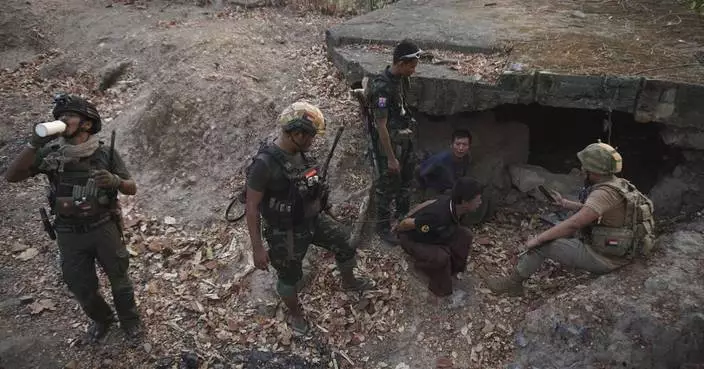The humanitarian group Save the Children said Tuesday it has confirmed that two of its staff were among at least 35 people, including children, who were killed in eastern Myanmar on Christmas Eve in an attack it blamed on the country's military.
It said the two staff members were caught up in the attack in Kayah state as they were traveling back to their office after conducting humanitarian activities in a nearby community.
“Violence against innocent civilians including aid workers is intolerable, and this senseless attack is a breach of International Humanitarian Law,” the group's chief executive, Inger Ashing, said in a statement.
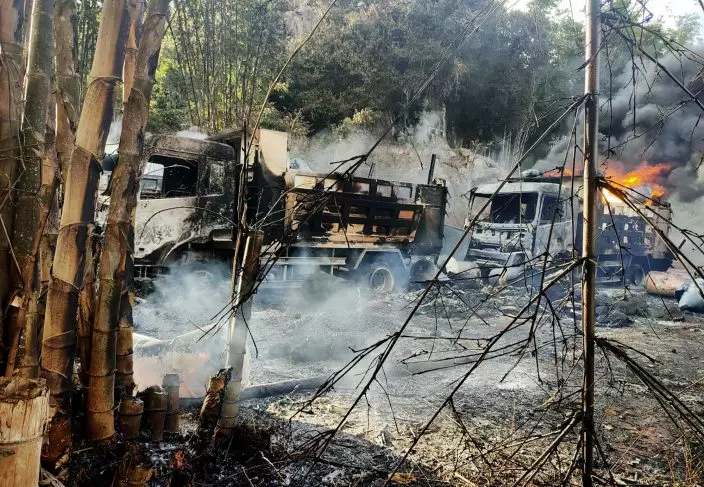
In this photo provided by the Karenni Nationalities Defense Force (KNDF), smokes and flames billow from vehicles in Hpruso township, Kayah state, Myanmar, Friday, Dec. 24, 2021. Myanmar government troops rounded up villagers, some believed to be women and children, fatally shot more than 30 and set the bodies on fire, a witness and other reports said Saturday. (KNDF via AP)
“This is not an isolated event. The people of Myanmar continue to be targeted with increasing violence and these events demand an immediate response,” Ashing said.
The army seized power in February, ousting the elected government and arresting top officials. Its action was met by nonviolent nationwide demonstrations, which security forces quashed with deadly force, killing nearly 1,400 civilians, according to the Assistance Association for Political Prisoners.
Peaceful protests have continued, but an armed resistance has also grown amid the severe crackdown, to the point that U.N. experts have warned the country could be sliding into civil war.

In this photo provided by the Karenni Nationalities Defense Force (KNDF), smokes and flames billow from vehicles in Hpruso township, Kayah state, Myanmar, Friday, Dec. 24, 2021. Myanmar government troops rounded up villagers, some believed to be women and children, fatally shot more than 30 and set the bodies on fire, a witness and other reports said Saturday. (KNDF via AP)
Save the Children called on the U.N. Security Council to respond to the army violence with steps including an arms embargo. It also urged the Association of Southeast Asian Nations to press for the implementation of an agreement reached in April with Myanmar's leader calling for the cessation of violence in the country and mediation by an ASEAN special envoy.
Photos of the attack have spread on social media in Myanmar, fueling outrage against the military.
The photos show the charred bodies of over 30 people in three burned-out vehicles who were reportedly shot by government troops as they were fleeing combat.
On Sunday, the U.S. Embassy in Myanmar said it was appalled by the “barbaric attack in Kayah state that killed at least 35 civilians, including women and children.”
“We will continue to press for accountability for the perpetrators of the ongoing campaign of violence against the people of Burma,” it said, using Myanmar's previous name.
A villager who said he went to the scene told The Associated Press that the victims had fled the fighting between armed resistance groups and Myanmar’s army near Koi Ngan village, which is just beside Mo So, on Friday. He said they were killed after they were arrested by troops while heading to refugee camps in the western part of the township. His account could not be immediately verified.
A report in the state-run Myanma Alinn newspaper on Saturday said the fighting near Mo So broke out on Friday when members of ethnic guerrilla forces, known as the Karenni National Progressive Party, and those opposed to the military drove in “suspicious” vehicles and attacked security forces after refusing to stop.
The newspaper said the seven vehicles they were traveling in were destroyed in a fire. It gave no further details about the killings.
Earlier this month, government troops were also accused of rounding up villagers, some believed to be children, tying them up and slaughtering them. An opposition leader, Dr. Sasa, who uses only one name, said the civilians were burned alive.
Save the Children said it has been working in Myanmar since 1995, providing healthcare, food, education and child protection services. It said it has suspended operations in the region of the attack.
Allergy season can bring misery to tens of millions of Americans each year.
Tree, grass, and other pollens can cause runny noses, itchy eyes, coughing and sneezing.
Where you live and what you're allergic to can make a big difference in how bad your allergies are, but there are many things you can do to feel better.
Here are some tips from experts to keep allergies at bay — maybe even enough to allow you to enjoy the outdoors.
There are three main types of pollen. Earlier in the spring, tree pollen is the main culprit. After that grasses pollinate, followed by weeds in the late summer and early fall.
Some of the most common tree pollens that cause allergies include birch, cedar, cottonwood, maple, elm, oak and walnut, according to the Asthma and Allergy Foundation of America. Grasses that cause symptoms include Bermuda, Johnson, rye and Kentucky bluegrass.
The best and first step to controlling allergies is avoiding exposure. That’s easier said than done when it's nice out.
Start with keeping your windows closed at home and in the car, avoiding going out when pollen counts are highest and changing clothes when you get home. The same masks that got us through the pandemic can protect you from allergies — though they won't help with eye symptoms.
Pollen trackers can help with planning. The American Academy of Allergy Asthma and Immunology tracks levels through a network of counting stations across the U.S. Counts are available at its website and via email.
You can't fight an enemy you don't know.
Since many Americans are allergic to several things at once, the first thing to figure out is what specifically you’re allergic to, said Dr. Nana Mireku, an allergist in the Dallas-Fort Worth area.
Over-the-counter nasal sprays can help relieve symptoms, but they take a while to kick in, so it’s best to start them in early in the season, said Dr. Rachna Shah, an allergist and director of the Loyola Medicine Allergy Count.
Antihistamines are another option. Shah said she’s seen some patients benefit from switching to a similar brand if one stops working, but said that there isn’t much broader data to back the recommendation.
For young children and people who have to take many different allergy medications, immunotherapies in the form of shots and oral drops can help desensitize the immune system to allergens, treating symptoms at their root.
The Asthma and Allergy Foundation of America issues an annual ranking of the most challenging cities to live in if you have allergies, based on over-the-counter medicine use, pollen counts and the number of available allergy specialists. This year, the top five were Wichita, Kansas; Virginia Beach, Virginia; Greenville, South Carolina; Dallas; and Oklahoma City.
If you've been thinking it started earlier and seems longer this year, you're on to something.
Shah usually starts looking at pollen counts in the Chicago area in April. But this year, she peeked at her data in mid-February, and tree pollen was already at a “moderate” level.
“This season has been so nuts,” she said. “Granted, it was a pretty mild winter, but I didn’t expect it to be so early.”
Shah said she believes this season will be longer than other years, assuming the weather remains warm.
Experts say climate change has led to longer and more intense allergy seasons.
The Associated Press Health and Science Department receives support from the Robert Wood Johnson Foundation. The AP is solely responsible for all content.
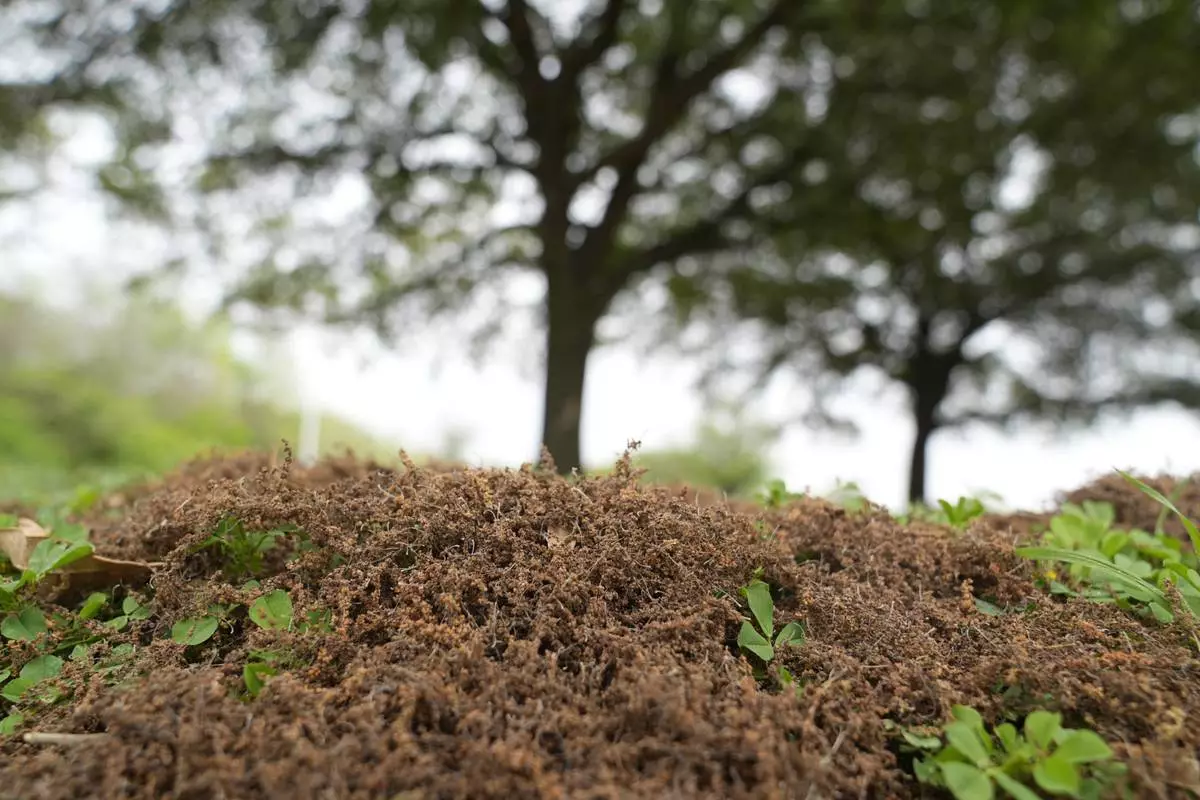
FILE - Tree pollen pods lay in a pile at a park in the Dallas suburb of Richardson, Texas, Thursday, March 21, 2024. The Asthma and Allergy Foundation of America issues an annual ranking of the most challenging cities to live in if you have allergies, based on over-the-counter medicine use, pollen counts and the number of available allergy specialists. In 2024, the top five were Wichita, Kansas; Virginia Beach, Virginia; Greenville, South Carolina; Dallas; and Oklahoma City. (AP Photo/LM Otero, File)
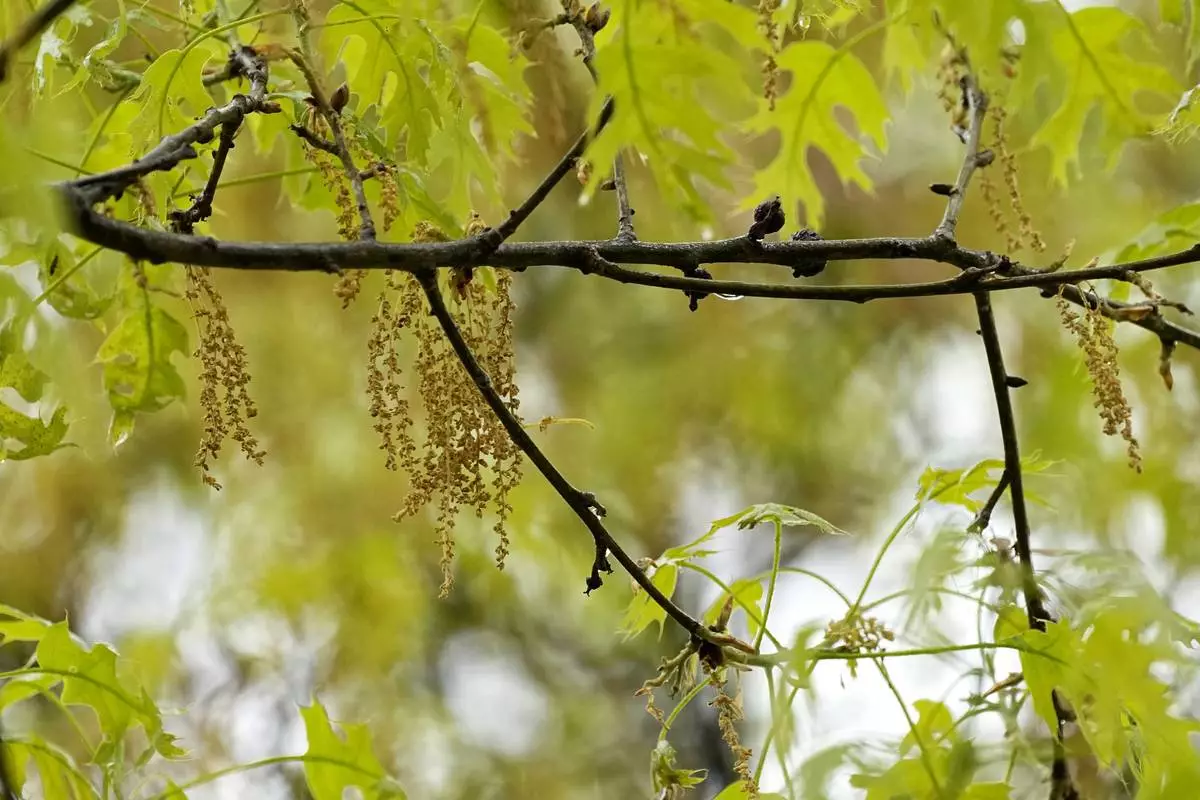
FILE - An oak tree with new leaf growth also shows pollen and a drop of water hanging among the branches at a park in Richardson, Texas, Thursday, March 21, 2024. There are three main types of pollen. Earlier in the spring, tree pollen is the main culprit. After that grasses pollinate, followed by weeds in the late summer and early fall. (AP Photo/Tony Gutierrez, File)




